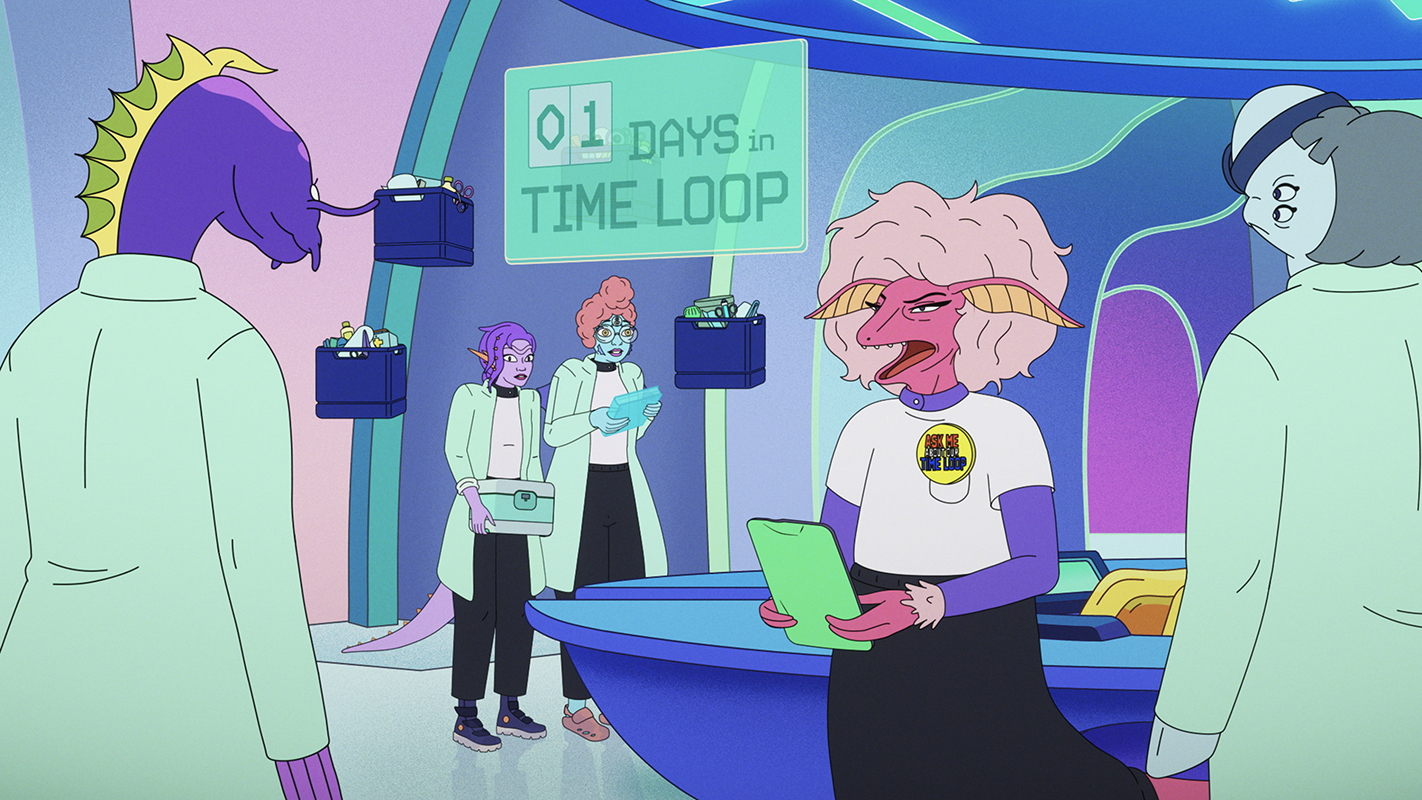Mind Control: Pixar’s Inside Out (Review)
Pixar's "Inside Out" is every bit as wonderful as the studio's defining classic, Toy Story. It's a triumph.

Pixar has done it again. Inside Out (![]()
![]()
![]()
![]()
![]() ), Pete Docter and Ronnie del Carmen’s animated movie about the world inside an 11-year-old girl’s head, is every bit as wonderful as the studio’s defining classic, Toy Story. Or Wall-E. Or Up. It’s a triumph.
), Pete Docter and Ronnie del Carmen’s animated movie about the world inside an 11-year-old girl’s head, is every bit as wonderful as the studio’s defining classic, Toy Story. Or Wall-E. Or Up. It’s a triumph.
It begins with two births: Riley, a chubby little baby, is hours old and swaddled in a blanket. Inside baby Riley’s head, Joy (Amy Poehler) glimmers to life. Joy sees a button on a console; when she presses it, Riley smiles and giggles. Voila! Joy made joy.
As a funny bit of montage work then explains, Joy is one of the five emotions who work in “headquarters” — she’s joined by Fear (Bill Hader), Anger (Lewis Black), Disgust (Mindy Kaling), and Sadness (Phyllis Smith). Together, they control Riley’s thoughts, feelings, and desires. It’s all whimsical: memories are glass orbs, each of which corresponds to an emotion. The memories are transported through a system of pinball tracks, suction tubes, and an actual train of thought. When a memory is powerful enough, it becomes a core part of Riley’s personality — a literal building block of identity, constructing islands within her mind.
Joy runs the show, keeping Riley happy, until her father (Kyle MacLachlan) uproots the family to start a tech company in San Francisco. Joy tries to keep things upbeat through the move, but after Sadness tarnishes a memory, they fight. Both get accidentally sucked into “long term” storage — a labyrinth that resembles the folds and wrinkles of a brain — leaving Fear, Anger, and Disgust to pilot Riley’s life. It’s a disaster. She misses her friends, her school, and her ice hockey team. She lies. She argues with her parents. Island by island, her personality crumbles apart.
From there, Joy and Sadness must work together to get back to headquarters. Along the way, they rediscover Riley’s imaginary friend, Bing Bong (Richard Kind), who promises to help. This type of journey is a common formula for Pixar, but Docter and del Carmen deploy it especially well for Inside Out. How? By syncing the ill-matched duo, beat for beat, with Riley’s struggle to accept a new home. Everything inside her head looks bright and shiny and colorful, but the world around her is increasingly bleak.
That’s not to say Inside Out is a dark movie. Docter and del Carmen stuff so much fun into Riley’s mind, the movie rarely misses an opportunity to show off its delightful inventions. Here’s an example: when Riley falls asleep, a studio called “Dream Productions” kicks to life, complete with actors, sets, lighting, and cameras. Pay close attention and you’ll notice movie posters plastered to the studio’s walls, including a Saul Bass-inspired number for a nightmare called “I’m Falling Into a Very Long Dark Pit.” Isn’t that so great?
Ultimately though, Inside Out succeeds by making a radical argument about emotional health. As Joy discovers, you can’t be happy all the time. Grief is essential. Riley needs to mourn the life she lost. She needs Sadness. She’s not just a “happy little girl” anymore. She’s growing up. This is probably a good time to mention that I still can’t think about the end of Inside Out without crying. It reminds me of my childhood, and reminds me to be grateful for the innocence I had, and moves me to tears because I’ve needed sadness too. We all have.
It’s okay to be sad. This may seem like an obvious fact to some — and Pixar’s critics may think of it as a tear-jerking ploy — but I believe it’s a profound idea. Docter and del Carmen built a movie around that idea. Whether for children or for adults, that’s an admirable, undeniable good.
When I think about Inside Out, I’m reminded of a story from Poehler’s memoir, Yes Please. In 2008, her doctor died the day before she would give birth to her first child. When she learned about his death, she burst into tears mid-rehearsal, heaving sobs “like in a Cathy cartoon” until SNL‘s guest host stepped in to console her. Sort of.
“Jon Hamm held me by the shoulders and looked at me and said, ‘I know this is very sad, but this is a really important show for me, so I’m going to need you to get your shit together,'” she wrote. “This made me laugh so hard I think I peed. Going from crying to laughing that fast and hard happens maybe five times in your life and that extreme right turn is the reason why we are alive, and I believe it extends our life by many years.”
Inside Out believes in sadness, but it also believes in that right turn. I do too.
Inside Out is rated PG and runs 94 minutes. Opens Friday in area theaters.
Support Metro Weekly’s Journalism
These are challenging times for news organizations. And yet it’s crucial we stay active and provide vital resources and information to both our local readers and the world. So won’t you please take a moment and consider supporting Metro Weekly with a membership? For as little as $5 a month, you can help ensure Metro Weekly magazine and MetroWeekly.com remain free, viable resources as we provide the best, most diverse, culturally-resonant LGBTQ coverage in both the D.C. region and around the world. Memberships come with exclusive perks and discounts, your own personal digital delivery of each week’s magazine (and an archive), access to our Member's Lounge when it launches this fall, and exclusive members-only items like Metro Weekly Membership Mugs and Tote Bags! Check out all our membership levels here and please join us today!























